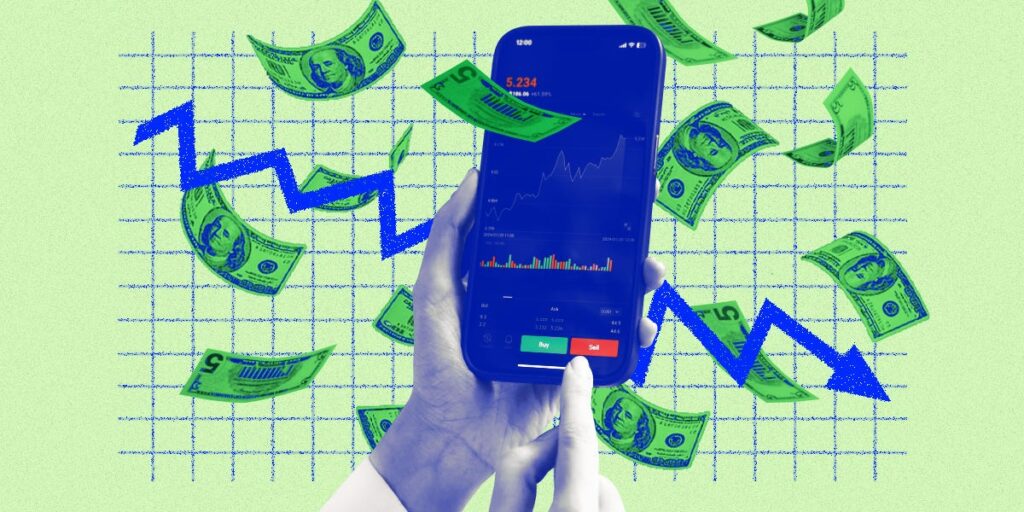Buying and holding Big Tech stocks has led to great performance in recent years, but this might not be the case going forward.
A stock sell-off led by the Nasdaq last week spread across the globe and deepened early on Monday. Down 3%, the tech-dominant index led the S&P 500 and Dow in premarket losses amid concerns that Fed rate cuts will come too late and that the AI-fueled rally made valuations too high.
Because Big Tech stocks make up a large part of the market and individual portfolios, changes in just a few of these companies can have a big impact on indexes. As a result, buy-and-hold investors are probably seeing more red than they’d like in their portfolios right now.
Bank of America expects to see increasing rotation out of the tech sector for the rest of the year. Savita Subramanian, the head of US equity and quantitative strategy, provides two trades for passive investors to take advantage of a rebalancing market.
Big Tech overexposure
If you hold a lot of Big Tech stocks in your portfolio, you’re not alone. The biggest institutional money managers are also fans of the buy-and-hold strategy. In a July 31 note, Bank of America shared that at least 70% of the large-cap long-only funds it tracks hold Magnificent Seven stocks.
There’s definitely reason to be bullish on tech overall, especially as AI spurs growth, but overexposure to Big Tech isn’t without its drawbacks. Subramanian points out that the Mag Seven declined more than 10% on average in the last two weeks of January. That’s a cumulative $2 trillion dollar drop in market capitalization.
According to Subramanian, there’s more room for Big Tech to fall, especially if investors don’t see AI monetization cases soon. Hyperscalers like Microsoft, Meta, and Google are allocating billions on AI capital expenditures this year, and if AI revenues don’t pick up in the coming quarter, buy-and-hold investors will be seeing more red in their portfolios.
Bank of America expects the rest of the market to start picking up momentum as well. “Earnings of the ‘Other 493’ are expected to accelerate throughout the rest of the year while Mag 7 earnings decelerate, suggesting the rotation may have further to go,” she wrote.
2 ways to diversify
While it’s tempting to leave your portfolio alone, buy-and-hold investors can benefit from some rebalancing as the market shifts away from Big Tech.
Subramanian identifies cyclicals as an area of investment. Buy-and-hold investors are extremely underexposed to them, specifically to energy, materials, and banks.
Long-only funds shed cyclical holdings during the first half of 2024, decreasing allocations in energy and materials by 11% and 5%, respectively. Fund holdings in banks are at the lowest levels in recent years, with exposure over one standard deviation below the long-term average since 2008.
With inflation slowing and rates expected to start coming down, Bank of America believes that the Fed will be able to engineer a soft landing for the economy, creating a favorable environment for cyclicals to do well going forward. Hard-landing risks appear to have risen since the note was published on Wednesday, however, with the famous Sahm Rule recession indicator being triggered on Friday by a rising unemployment rate. Still, it remains to be seen how much further the labor market will loosen.
Buy-and-hold investors should also consider swapping out the cash in their portfolios for dividend stocks, Subramanian said. Currently, there’s over $6 trillion in US money market funds. And households are increasingly sitting on piles of cash: $18 trillion of it, to be exact. That’s up $5 trillion from the pre-Covid days.
As the Fed begins to cut rates, investors will earn less on their money if they leave their accounts alone. Dividend stocks provide quarterly income and can be a good way to enhance returns as yields on cash decline. They’re also relatively cheap right now — the forward price-to-earnings ratio on high-dividend stocks is at its 11th cheapest percentile relative to the S&P 500.
Investors interested in making the switch from a buy-and-hold to a more active strategy can do so by investing in funds such as the Vanguard Financials ETF (VFH), the Energy Select Sector SPDR Fund (XLE), and the SPDR Portfolio S&P 500 High Dividend ETF (SPYD).
Source link : http://www.bing.com/news/apiclick.aspx?ref=FexRss&aid=&tid=66b0a5c5ac7d4e9881c796b611d5afff&url=https%3A%2F%2Fwww.businessinsider.com%2Fstock-market-buy-and-hold-investing-strategy-diversify-big-tech-2024-8&c=12193081212392583543&mkt=en-us
Author :
Publish date : 2024-08-04 21:55:00
Copyright for syndicated content belongs to the linked Source.
